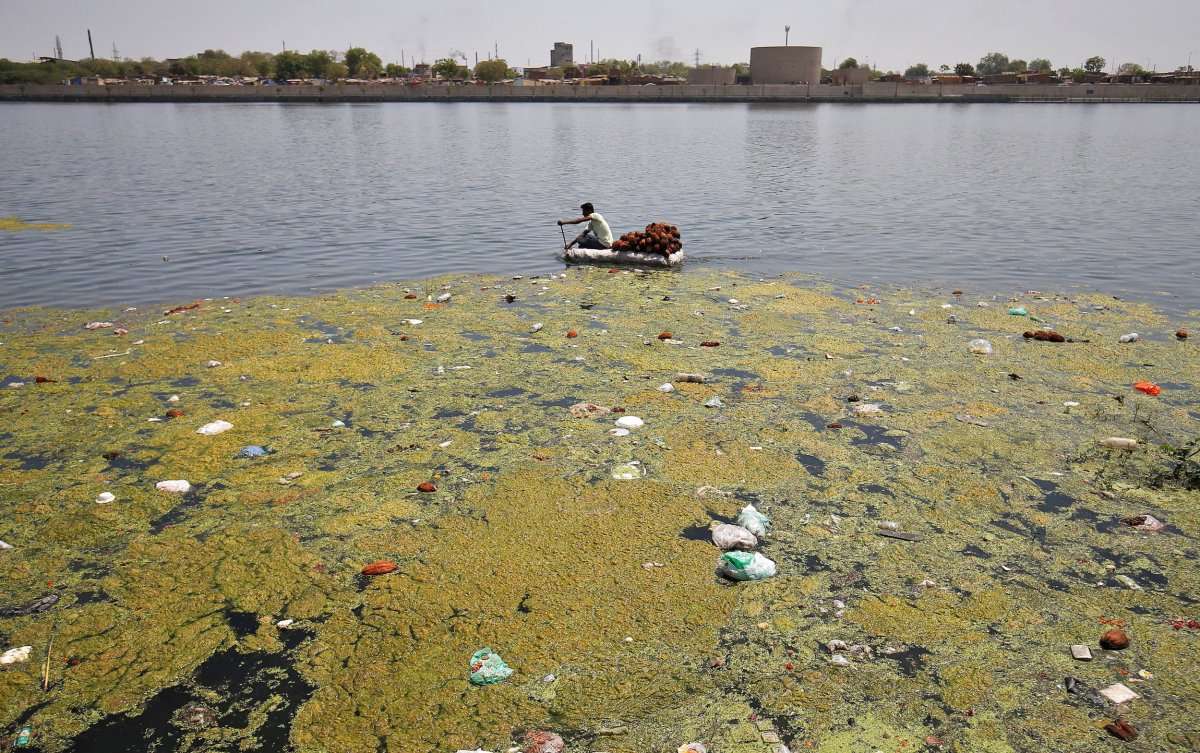
Scientists have created a device that can pull drinking water from the air using only the power of sunlight. The water harvester is so effective that it even works well when humidity is as low as 20 percent—typical of many of the driest regions on Earth.
While the technology is nowhere near commercialization, scientists say their breakthrough has laid the foundations for a product that could deliver safe drinking water to parts of the world where it's scarce. That could change the lives of the 4 billion people around the globe who lack access to safe drinking warer for at least one month per year.
In a study published in the journal Science, researchers led by Evelyn Wang from MIT, Massachusetts, and Omar Yaghi , from the University of California, Berkeley, have now demonstrated how their device collects moisture from the air and turns it into drinkable water. The amount of water in the atmosphere is equivalent to 10 percent of the water in every freshwater lake on Earth, so a potentially huge resource.
The technology is based on a material called a metal-organic framework (MOF), first developed by Yaghi more than 20 years ago. MOFs are materials created by stitching together organic and inorganic metallic units into porous frameworks with extremely high surface areas, Yaghi tells Newsweek in an email interview.
"MOFs are solids which appear to the naked eye no different than sand, where each granule is riddled with holes into which gases and molecules of interest can be selected, brought in and compacted—making it possible to store voluminous amounts of gases in smaller containers," he explains.
Recently, he and Wang, a mechanical engineer, teamed up to develop an MOF device that could collect water. Their prototype works by using two pounds of specially-designed MOF crystals that are compressed between a solar absorber and a condenser plate. "As air passes through the MOF material, water is trapped in its tiny nanometer-sized pores and is then concentrated," Yaghi says.

"Upon heating by ambient sunlight, the water is released from the pores and condensed as a result of the temperature difference between the material in the device and the surroundings. The special property of this material that made all this possible is the fact that it has high affinity to water molecules to pull them out of the air, but does not hold on to them too tightly so that water can be concentrated and released with a slight temperature change."
When they tested the device—about the size of a tissue box—they showed it could pull 2.8 liters of water from the air over 12 hours. This was in conditions with just 20 to 30 percent humidity. They also carried out rooftop testing to show it worked in real-world conditions.
The device is only a proof of concept and the team believes it can be improved to double the amount of water collected, while also working in even lower humidity levels. The team now plans to carry out these improvements in a bid to scale up the technology.
Wang tells Newsweek that at the moment, the device is not viable as a commercial product. "What we'd like to do is incorporate multiple layers into the design that can then capture a lot more of the water locally, within this device," she says. "The MOFs can now be further optimized so they can capture more water. The key then is in the engineering. Once you can increase capacity of the material, then of course that reduces the weight and overall size of the actual system. We can then think about clever designs of how to stack these layers into the system by which you can enhance the transportation of the vapor molecules and the production of the water."
The plan is to create a 30-liter system, about the size of a carry-on suitcase, which would be able to provide drinking water for a family of four each day. She estimates this could be done within the next two years.
"This is a significant step forward to commercialization," Yaghi says. "In taking the invention out of the lab and demonstrating the device in real-world conditions, we have shown that the MOF works and the device that it is contained within can operate and deliver water by trapping water from dry air. Certainly, there are many techniques for capturing water at high humidity but all those don't work at low humidity as this MOF device does. Needless to say, the fact that our device works in ambient sunlight is unique.
"This is the first material and device capable of water capture and delivery under such conditions, making it potentially possible to water those areas where water is scarce. This application extends beyond drinking water and household purposes, off grid. It opens the way for use of such MOFs to water large regions as in agriculture."
Wang adds: "Because this device is passive you can really reach out to remote areas that don't have infrastructure and often they're quite arid so it's not very humid environments. This kind of technology can target that market and address these needs for these people."
Uncommon Knowledge
Newsweek is committed to challenging conventional wisdom and finding connections in the search for common ground.
Newsweek is committed to challenging conventional wisdom and finding connections in the search for common ground.
About the writer
Hannah Osborne is Nesweek's Science Editor, based in London, UK. Hannah joined Newsweek in 2017 from IBTimes UK. She is ... Read more
To read how Newsweek uses AI as a newsroom tool, Click here.








